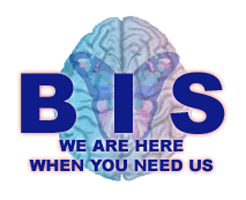Traumatic Brain Injury
also known as TBI, is a silent and growing concern in this borough, the
state and throughout the country. Traumatic Brain Injury is a nondiscriminatory
and finds itself can be found in all cultures and nationalities.
A rapid motion of the head in many directions, sometimes-called "whiplash"
causes traumatic brain injury. It is also an acceleration and deceleration
of the head during which the brain is thrust back and forth at crushing
speeds thus bouncing the brain off the walls of the skull. An example
of this is when you shake an uncooked egg. The sloshing sound you hear
is the yoke hitting the shell. Shake the egg hard enough, the yoke cracks
and breaks. This is what happens to your brain during rapid acceleration
and deceleration. Your brain becomes injured. This is Traumatic Brain
Injury - TBI.
Traumatic Brain Injury is known as "The Silent Epidemic" because
it is often unseen. Physical symptoms often do not accompany a brain injury,
therefore; the brain injury is not visible.
Traumatic Brain Injury - TBI may cause intellectual, emotional, social,
behavioral, vocational, cognitive, visual, vestibular, speech, hearing,
and physical difficulties. As with any head injury, smell and taste are
also often affected.
The intellectual, behavioral, vocational difficulties may often affect
present and care, future life styles and personality behavior of the brain
injured recovering and recovered individual. In most instances, the person
you knew, no longer exists. A new person reemerged, a person who is unknown
to you and even to them. This person is different and will more than likely
never be the person you knew and loved. The are a different person. They
are discoverers of a new individual with a new potentials to be fulfilled.
The symtomology of Traumatic Brain Injury often shows itself immediately.
Denial is the first line of defense. The symptoms vary greatly and it
depends upon the extent of the location of the brain injury. Memory problems,
learning difficulties, personality changes and physical disabilities are
common and often seen by the recovering individual family members and
friends. They can either be subtle or major in nature.
1. Cognitive impairments: May be very mild to exceedingly severe. They
include memory deficits (short or long term), difficulties with concentration,
slowness, thinking, attention, perception, communication, reading, writing
skills, planning, sequencing, and judgement.
2. Physical impairments: Speech, hearing, vision, and sensory impairments,
headaches, dizziness, vertigo, lack of coordination, spastically of muscles,
paralyses to one or both sides, and seizure disorders are often seen.
3. Psycho-Social-Behavioral-Emotional Impairments: Fatigue, mood swings,
denial, self centeredness, anxiety, depression, lowered self-esteem, sexual
dysfunction, restlessness, lack of motivation, inability to self-monitor,
difficulty with emotional control, inability to cope, agitation, excessive
laughing or crying and difficulty relating to others.
There is no cure for Traumatic Brain Injury, only correct rehabilitation
and development of compensatory skills, sharpened strategies and heightened
techniques for the TBI recovering individual.
Traumatic Brain Injury - TBI is not a mental disorder. It is a dysfunction
of the brain hemispheres due to an injury. It is covered separately by
the American Disabilities Act, United States Federal Law and New York
State Law. Traumatic Brain Injury - TBI, is an acquired brain injury and
an acknowledged disability.
K. Menucha Fogel, B.A., Founder Brain Injury Society, also known
as Metropolitan Brain Injury Association NY

